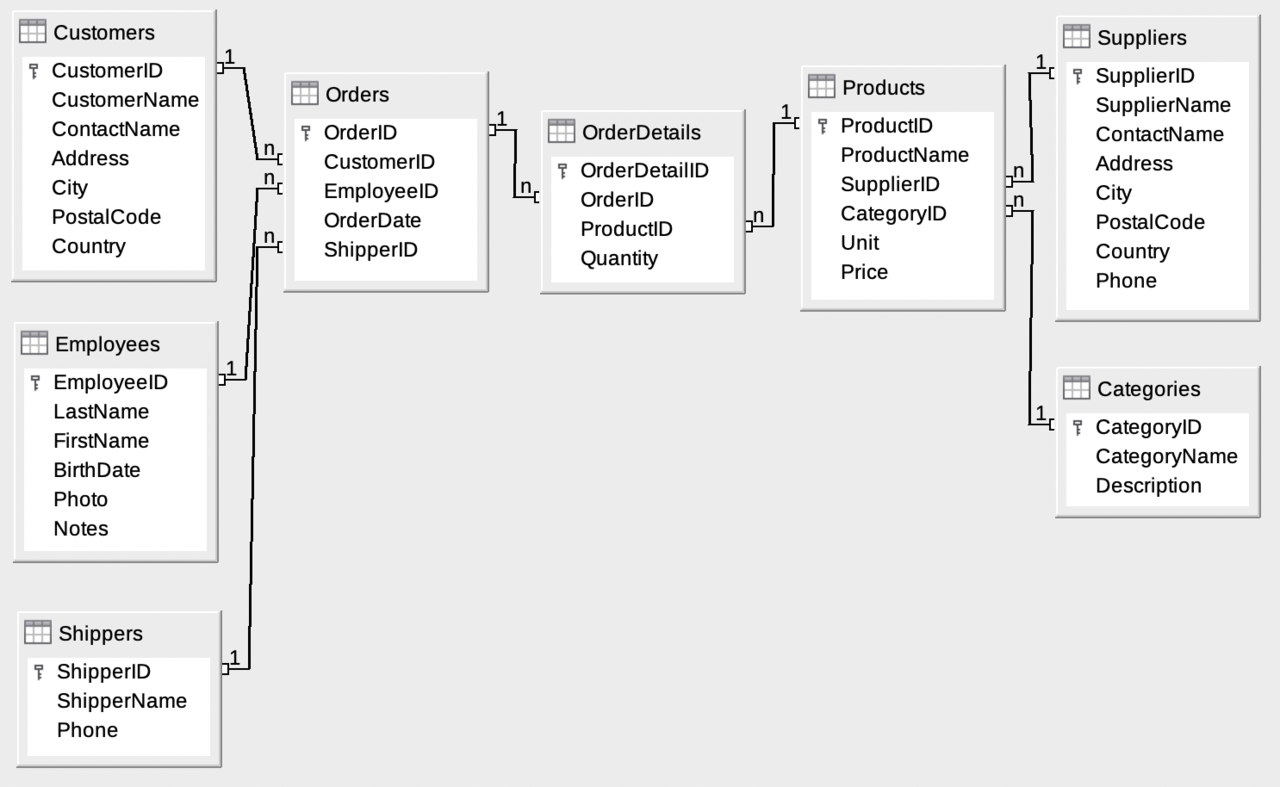SQL SELECT WHERE Clause
The WHERE clause is used to filter records.
It is used to extract only those records that fulfill a specified criterion.
|
With the where clause, the operators below can be used:
|
|
SELECT column_name(s) FROM table_name
WHERE column_name operator value;
|
|
| Operator |
Description |
|
Operator |
Description |
|
Operator |
Description |
= |
Equal |
<> or != |
Not equal |
> |
Greater than |
< |
Less than |
>= |
Greater than or equal |
<= |
Less than or equal |
LIKE |
Search for a pattern |
BETWEEN |
Between an inclusive range |
IN |
One of the multiple vluaes |
| person_id |
last_name |
first_name |
address |
city |
| 1 |
Hansen |
Ola |
Timoteivn 10 |
Sandnes |
| 2 |
Svendson |
Tove |
Borgvn 23 |
Sandnes |
| 3 |
Pettersen |
Kari |
Storgt 20 |
Stavanger |
To select only the persons living in the city Sandnes, we add a
WHERE clause to the
SELECT statement:
SQL> SELECT * FROM person WHERE city = 'Sandnes';
PERSON_ID LAST_NAME FIRST_NAME ADDRESS CITY
--------- ----------- ----------------- ------------- -----------
1 Hansen Ola Timoteivn 10 Sandnes
2 Svendson Tove Borgvn 23 Sandnes
|
Single quotes are used around the conditional values in the examples.
SQL uses single quotes around text values (most database systems also accept double quotes).
Numeric values should not be enclosed in quotes.
SQL> SELECT * FROM person WHERE first_name=Tove;
ERROR 1064 (42000): Syntax error near '=Tove' at line 1
SQL> SELECT * FROM person WHERE Year='1965';
ERROR 1064 (42000): Syntax error near '=1965' at line 1
|
Demonstration
Below is an SQL test area from W3Schools, which uses the well-known Northwind sample database.
The tables here are for read only because of the problem of embedding the scripts.
For a fully working example, check this by using Chrome.

|
|
The Database includes:
| Tablename | Record |
|---|
| Customers | 91 |
| Categories | 8 |
| Employees | 10 |
| OrderDetails | 518 |
| Orders | 196 |
| Products | 77 |
| Shippers | 3 |
| Suppliers | 29 |
|
This SQL-Statement is not supported in the WebSQL Database.
The example still works, because it uses a modified version of SQL.
Your browser does not support WebSQL.
Your are now using a light-version of the Try-SQL Editor, with a read-only Database.
If you switch to a browser with WebSQL support, you can try any SQL statement, and play with the Database as much as you like. The Database can also be restored at any time.
Our Try-SQL Editor uses WebSQL to demonstrate SQL.
A Database-object is created in your browser, for testing purposes.
You can try any SQL statement, and play with the Database as much as you like. The Database can be restored at any time, simply by clicking the "Restore Database" button.
W3C WebSQL
WebSQL stores a Database locally, on the user's computer. Each user gets their own Database object.
WebSQL Browser Support
WebSQL is supported in Chrome, Safari, and Opera.
If you use another browser you will still be able to use our Try SQL Editor, but a different version, using a server-based ASP application, with a read-only Access Database, where users are not allowed to make any changes to the data.
